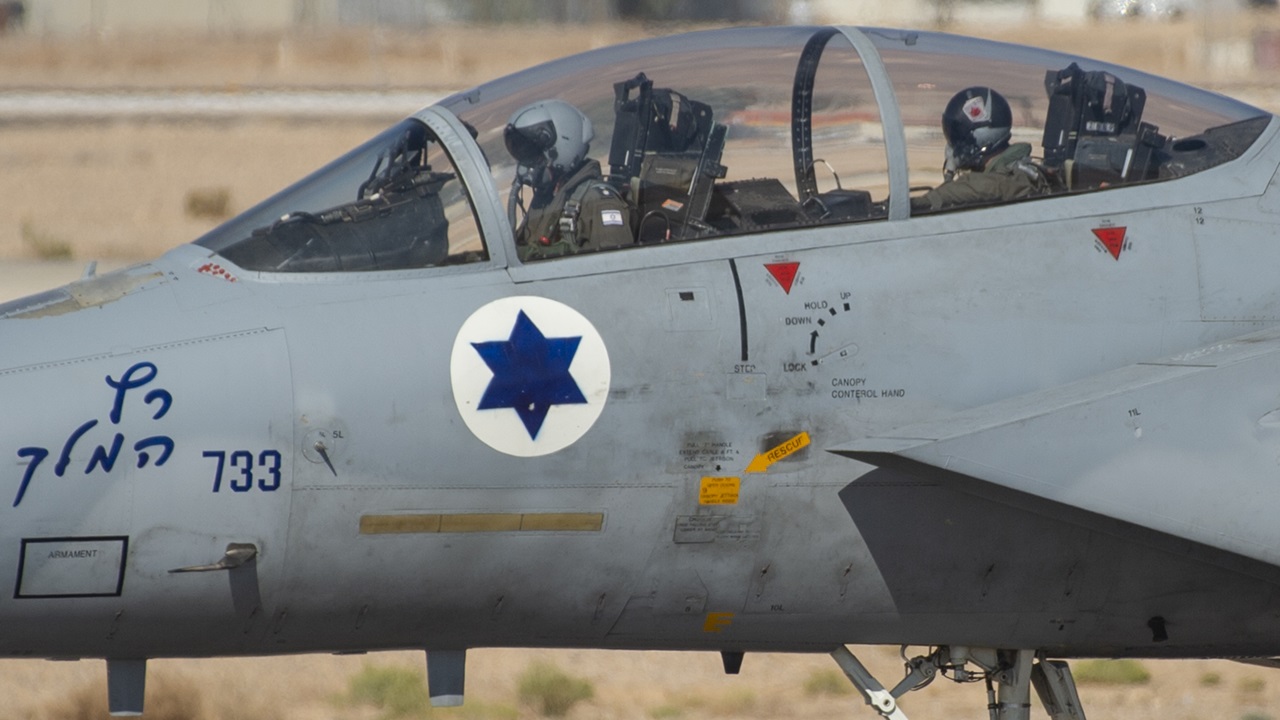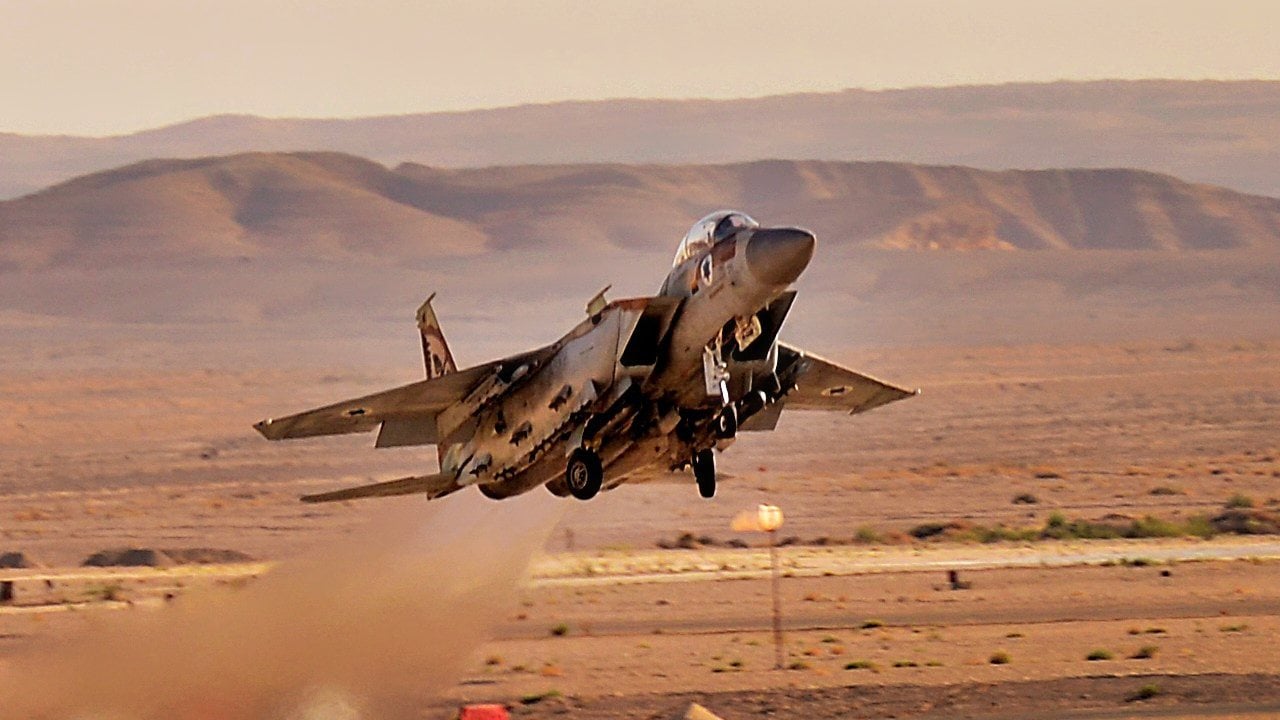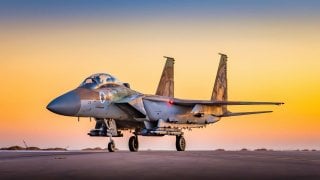Why Israel Was the First Air Force to Send the F-15 on a Strike Mission
In 1985, the Israeli Air Force (IAF) executed Operation Wooden Leg, a daring aerial raid on the PLO's headquarters in Tunis in response to terrorist attacks using F-15 fighters.
Summary: In 1985, the Israeli Air Force (IAF) executed Operation Wooden Leg, a daring aerial raid on the PLO's headquarters in Tunis in response to terrorist attacks.

-This mission, Israel's longest aerial strike at the time, used eight McDonnell Douglas F-15 Eagles, typically air superiority fighters, refueled mid-flight by a Boeing 707 tanker.
-The IAF successfully destroyed their targets with no aircraft losses, demonstrating Israel's capability and resolve.
When Israel's F-15 Eagles Took the Fight to Tunis
In 1985, the Israeli Air Force (IAF) executed Operation Wooden Leg, a daring aerial raid on the PLO's headquarters in Tunis in response to terrorist attacks. This mission, Israel's longest aerial strike at the time, used eight McDonnell Douglas F-15 Eagles, typically air superiority fighters, refueled mid-flight by a Boeing 707 tanker. The IAF successfully destroyed their targets with no aircraft losses, demonstrating Israel's capability and resolve.
As Israel continues its ground operation in Gaza in response to the horrific terrorist attack the Middle Eastern nation faced on October 7, 2023, it should be remembered that nearly forty years ago, the Israeli Air Force (IAF) carried out one of the most daring aerial raids in the Jewish state’s history. It employed an American-made air superiority aircraft to strike targets on the ground.
The operation was planned after three Israelis were brutally murdered aboard a yacht at Larnaca in Cyprus in late September 1985. It followed a number of terrorist attacks that had been directed against Israeli targets that year. The perpetrators were quickly identified as Force 17, a terrorist organization that had known ties to the Palestine Liberation Organization (PLO). The Israeli government quickly came to the decision to retaliate for the murder of its citizens by striking at the PLO’s headquarters in Tunis.
As Defense Minister Yitzhak Rabin describes it, Israel’s objective was to impress upon the PLO that it would never be safe. “The IDF will always find and punish those responsible,” Rabin said at the time, according to the IAF archives.
It was easier said than done.
The challenge facing the IAF was that its fighters would need to fly almost 2,000 km (nearly 1,250 miles) there and back across the Mediterranean Sea. The operation was further complicated as it included a flight outside the traditional airways to add an extra element of surprise. Codenamed “Operation Wooden Leg,” the plan was presented to the government by the commander of the Air Force of the time, General Amos Lapidot.
It was to be the longest aerial strike mission in the nation’s history to that point.
An Air Superiority Fighter in a Ground Attack Role
While the IAF had aircraft suited to ground attacks, IAF planners opted to employ eight McDonnell Douglas F-15 Eagles—known as Baz (Hebrew for “Falcon”) in IAF service—for the mission, refueled by a Boeing 707 tanker en route.
This could be seen as a notable choice as the twin-engine all-weather F-15 was developed as a tactical fighter that primarily served in an air superiority role, while its secondary ground-attack capability was largely unused—although it did prove flexible enough that an improved strike derivative, the F-15E Strike Eagle, was later developed.
F-15 Attack: Targeting the PLO
The IAF’s target was the PLO complex at Hamam-al-Shatt in Tunis. It included the office of Yasser Arafat and those of his senior advisors, as well as PLO operations, communications, and public relations centers. The complex was further reported to house a Force 17 barrack.
The plan quickly came together, and the raid was launched on October 1, 1985. The air-to-air refueling went off without a hitch, and the only serious concern was the weather, as the Gulf of Tunis was covered in clouds. However, as the F-15 Eagles approached the coast of North Africa at 11 am local time, the weather cleared and the IAF pilots were able to quickly identify their targets, attacking the PLO headquarters with complete surprise and more importantly with deadly accuracy.
Six two-seater F-15Ds attacked the PLO headquarters in Tunis with one GBU-15 guided bomb per aircraft while a pair of single-seat F-15Cs then targeted the complex ruins with six Mk-82 unguided bombs each. All of the mission’s targets were damaged or destroyed, including Arafat’s headquarters, which took a direct hit, although he was not present at the time, as did the Force 17 barracks. A total of seventy-five people were killed, with as many as sixty believed to be in the PLO, and many a part of Force 17.
Not a single F-15 BAZ was shot down.
“We felt intense pressure during those few seconds,” explained one of the IAF pilots who participated in the operation, via the IAF archives. “We had a good dose of adrenaline in our blood, and we were totally focused on our goal. When we reached our destination, we fired our ammunition at the target.”
The United States government acknowledged it as a raid on a legitimate target.

It was the first known use of F-15 Eagle in a strike mission, and Israel was once again able to show that it would retaliate for any actions against it or its people—no matter what the cost politically or in world opinion would be.
About the Author: Peter Suciu
Peter Suciu is a Michigan-based writer. He has contributed to more than four dozen magazines, newspapers, and websites with over 3,200 published pieces over a twenty-year career in journalism. He regularly writes about military hardware, firearms history, cybersecurity, politics, and international affairs. Peter is also a Contributing Writer for Forbes and Clearance Jobs. You can follow him on Twitter: @PeterSuciu. You can email the author: [email protected].
Image Credit: Shutterstock.


